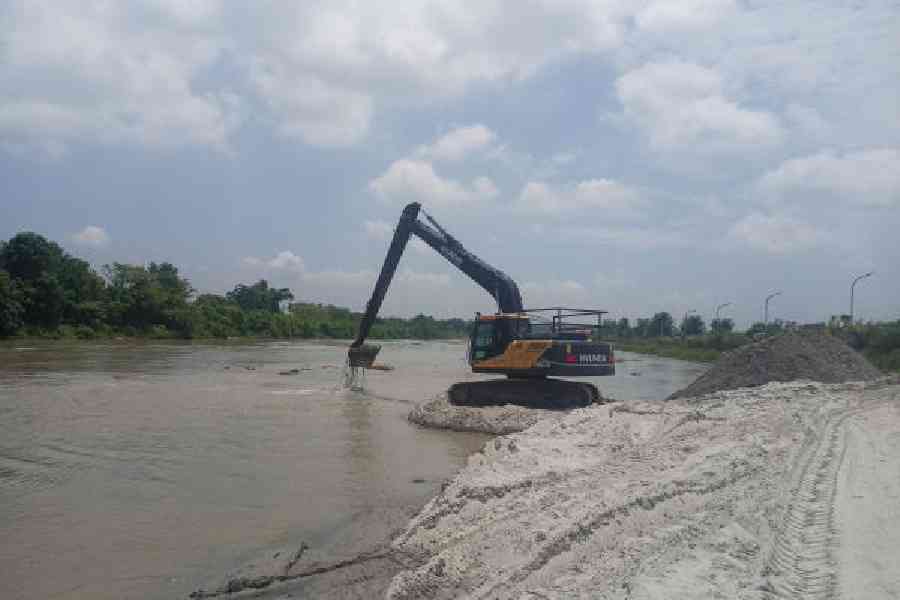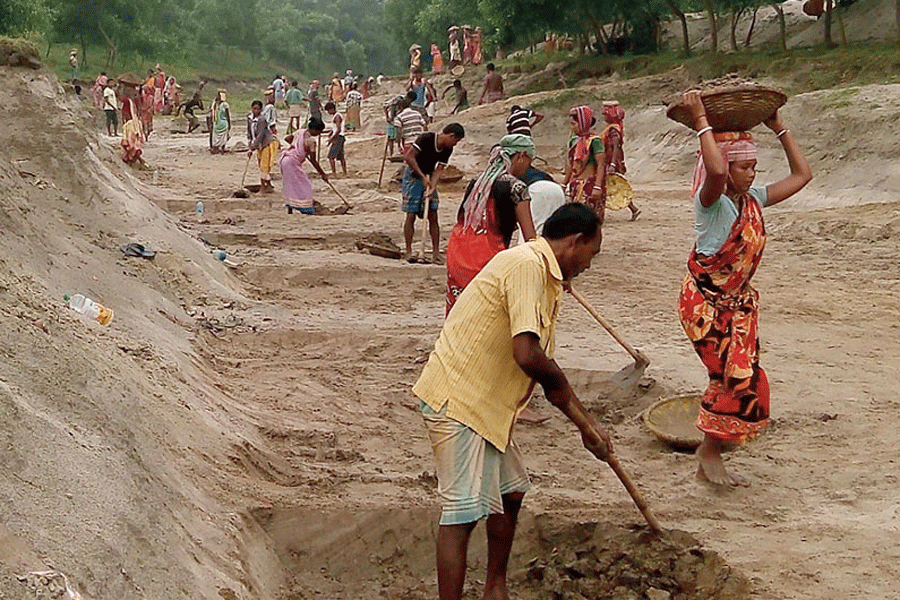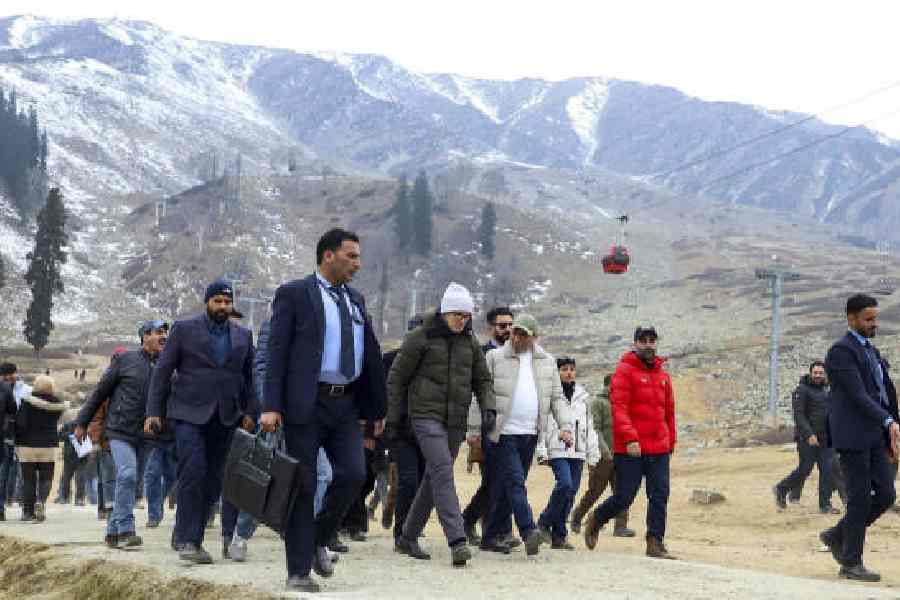The paucity of rainfall in the upper catchment areas of the Teesta during the ongoing monsoon season has opened a window for the state irrigation department to carry out dredging in the Teesta Mahananda Link Canal (TMLC) that carries water along the right bank of the river.
The canal’s bed, along with the Teesta river bed, had increased because of huge silt deposits during the Glacial Lake Outburst Flood (GLOF) that had occurred on the South Lhonak Lake in north Sikkim in October 2023.
After the GLOF, officials of the department and river experts underscored the need to dredge the river and the canal to increase their capacity to retain higher volumes of water.
“The water-holding capacity of the canal, which starts from Gajoldoba (where the Teesta barrage is located), moves through the outskirts of Siliguri and heads towards North Dinajpur, has come down because of silt deposition. As there are roads and villages on either side of the canal, we have to be cautious while releasing water, or else, the water will spill over the banks and flood these areas,” said a senior official of the irrigation department.
“As there has been no rainfall in the upper catchments of the river during the past few days, we have started dredging the canal. Earth movers have been engaged to take out the silt from the canal’s bed so that more water can be channelised through it,” the
official added.
North Bengal didn’t receive showers in the past few days. The mercury has touched the 37-degree Celsius mark in some places.
Sources have said the canal brings water to agricultural land in some blocks of Jalpaiguri, Darjeeling and North Dinajpur districts.
“Because of the low rainfall, the agricultural land also needs water. Once the dredging is over, additional water will help the farmers,” said a source.
Added to it, water from the canal is also drawn to the water treatment plant of the Siliguri Municipal Corporation. “There had been disruptions in the drinking water supply because the silt also got into the intake well of the plant. The dredging will help in drawing adequate water into the plant,” the source added.
Further, the canal has three micro hydroelectric projects at Liusipukuri in Darjeeling district and Hapatiagach and Bholagach in North Dinajpur district.
“To run the turbines of these units, a steady supply of water is required. As navigability of the TMLC will increase after the silt is removed, the power projects will also get the required water around the clock,” pointed out an official.
Silt deposits up to the level of four to five feet are being extracted during the dredging, he added.
The work is being carried out by an agency engaged through the West Bengal Mineral Development & Trading Corporation Limited, a state government undertaking that functions under the department of large industries & enterprises.
“The silt is a mixture of sand and pebbles. Those would be sold as construction materials, and the agency will pay revenue to the state government,” said a source.










